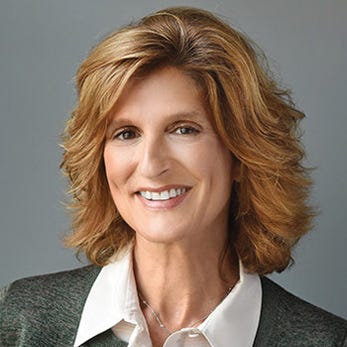When Top Advisors Leave Their FirmsWhen Top Advisors Leave Their Firms
If changing firms made sense to these billion-dollar-plus advisors, what lessons can be learned by those who manage less but aspire for more?

When it comes to advisor movement, the disruption and hassle of changing firms or models are real. So, the upside in a new opportunity must be significant; the move must solve for frustrations and limitations an advisor may be experiencing.
And while that’s true for any advisor, the risk/reward threshold for those managing $1 billion or more is even higher. Yet, by our count through July of this year, there have been nearly two dozen moves by mega-advisors and teams.
For example:
Ghislain Gouraige and his 11-person team in Coral Gables, Fla., generating $15 million in revenue on $3 billion in assets under management, left UBS to join NewEdge Wealth in February.
New York–based Wells Fargo Private Bank advisors Crista Tucker and Greg Shevlin, managing $1.35 billion in client assets and generating $7.5 million in revenue, joined First Republic Investment Management in March.
David A. Ruben led his Bethesda, Md.–based Merrill Lynch team, generating $5.4 million in revenue on $1 billion in assets, to Rockefeller Capital Management in April.
Jennifer Marcontell, a top advisor at Ed Jones with $1.7 billion assets, left to set up an independent business in Baytown, Texas, with Ameriprise in July 2022.
Clearly, these advisors have built extraordinary businesses. So, why would they disrupt momentum to change firms or models? And if it makes sense for these advisors, what might that mean for those who manage far less but aspire for more?
What is it that all advisors can learn from these transitions?
In conversations with some of the industry’s most productive advisors, we find it comes down to these key insights:
No one is immune to the frustrations, red tape and added bureaucracy that advisors are experiencing at the big firms. You might think that the largest producers would be insulated from many of the headaches, or they would be exempt from the effects of management-to-the-lowest-common-denominator. Surprisingly, though, in most cases they are not. Instead, many are changing firms to gain greater autonomy and control—and ultimately accelerate growth.
When it comes to making a move, business complexity and size have become far less of a concern. These advisors realize that they can often replicate or improve upon access to product, platform and technology—and, in the end, run a more efficient practice while taking client service to a new level.
Over time, these top advisors become much less reliant on the resources their firms provide and much more self-sufficient. As a result, they start to question the value they are receiving from the firm relative to the price they pay. And the reality is that these folks are big enough, scaled enough and mature enough to fly the coop.
The brand name of a big firm is no longer a “selling factor” when it comes to winning and retaining business. Strong client relationships are being built with advisors—not the big firms they represent—making the brand far less important than it once was.
Many have operated largely as “independent” businesses within the larger firms. These top advisors become de facto business owners, yet the firm retains the operating leverage. As a result, some have taken the biggest leap of all and established independent businesses—shifting the balance in their favor, taking on more of the risk but being rewarded with the benefits of fewer limitations and greater financial gains.
These smart advisors are “reading the tea leaves” when it comes to the direction the firm is going—from recruiting practices to increased bureaucracy. In a recent podcast episode, former Merrill advisor and Advisory Council to Management (ACTM) Chair Kelly Milligan shared a unique insider’s perspective on the change he witnessed at the firm.
“Merrill’s principles started with clients first. Then, after the merger [with Bank of America], there was a new set of principles that did not start with clients first. The environment shifted from being one of ‘let’s make sure that we are accomplishing things for our clients’ to ‘let’s make sure we are minimizing, and even better yet, eliminating risk in the business.’ And one of the best ways to eliminate risk is to not approve anything, not do anything. Easiest to say no, and then there’s no risk in that decision,” he said.
While not everyone has his insider’s view, advisors are watching as mandates are added and are worried that, over time, they will have even less control than they do now.
It’s apparent that over the last decade, advisor mindset is going through a dramatic shift. Even the most productive advisors could opt to rest on their laurels, but instead are changing firms because they see themselves as fiduciaries and feel a responsibility to deliver excellence to their clients without limitations from their firms.
The good news is that the opportunity to realize their goals has never been more possible than it is now—with an expanding number of independent options to meet their needs.
Mindy Diamond is CEO of Diamond Consultants in Morristown, N.J., a nationally recognized boutique search and consulting firm in the financial services industry.
About the Author
You May Also Like







